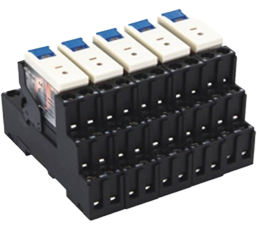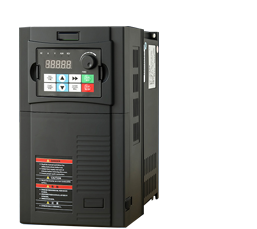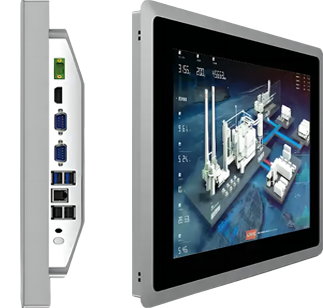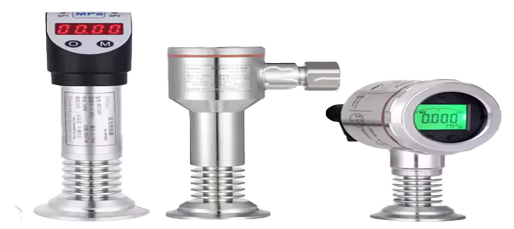The future development direction of programmable PLC controllers
In the future, programmable PLC controllers (PLC) will continue to advance in the fields of hardware, software and communications to adapt to the development of technology. Possible evolutions will include a combination of some functionality from PLCs and programmable automation controllers (PACs) to enable communication from the bottom to the top of the factory.
From the beginning, when PLCs began to replace relays and timers in large numbers, there was a driving force to reduce the size of automatic control systems and simplify support and maintenance for the future development trend of PLCs. Over the past few years, relays have been replaced by smaller rack-based structures or smaller programmable logic controllers with remote input/output ports.
With the development of microelectronic technologies such as very large scale integrated circuits and very large scale integrated circuits, programmable logic controllers have developed from the initial unit computers to the current microcomputer PCs composed of 16-bit and 32-bit microprocessors, realizing many functions. Processor multi-pass processing. Today, PLC technology is very mature. It not only enhances control functions, reduces power consumption and volume, reduces costs, improves reliability, and makes programming and fault detection more flexible and convenient, but also with remote I/O and communication networks, data The development of processing and image display has enabled PLC to develop in the direction of continuous production process control and become the backbone of industrial production automation.
As programmable controllers are increasingly used in applications, programmable controller technology and its product structure are constantly improving, becoming more and more powerful and cost-effective.
1.Smaller, faster, better
As the electronics industry continues to develop, the size of today's processors, circuit boards and components continues to shrink. These technologies are slowly affecting PLC, making it more stable, reliable and robust, and further improving its functions, such as faster processors, scalable memory capacity and new featured communication mechanisms.
In response to market demand, many features and functions are being transferred from high-end PLCs to low-end PLCs. For example, we can expect that future small PLCs will have more functions of high-end PLCs, while mid-to-high-end PLCs will also provide smaller and more compact solutions to meet customer needs.
At the same time, PLC also benefits from reduced memory costs and size. These advantages greatly increase the storage capacity of localized data and allow programmable logic controllers to be used in applications that historically required expensive data capture systems. This also enables the implementation of other functions, such as on-board storage of product information, thus speeding up troubleshooting.
Today's PLCs also benefit greatly from USB technology, which makes networking, programming and monitoring of control systems easier than ever. As USB technology continues to advance and smaller mini USB connectors become available, you can expect to see this communication option on more small PLCs.
Another example is non-volatile portable storage devices, which have rapidly penetrated the industrial market from the rapidly changing world of consumer electronics. They bring huge benefits to PLC users by providing a lot of extra storage space in a small package. These possible options include USB device, SD card, mini SD card, micro SD card, etc. , adding up to 32GB of additional storage space for end users, machine builders and system integrators.
2. Integration of programmable controller and polyaluminum chloride
Many industrial controller vendors are still selling the similarities and differences between PACs and PLCs, but when future automation engineers think about their systems, they may not care what the names are and just focus on performance and actual functionality. Just as the definitions and characteristics of these two devices continue to evolve, PLCs and PACs will evolve into each other.
Based on this evolution, there will be plenty of opportunities in both the low-end and high-end markets. As hardware technology advances, advanced features will find their way into lower-end processors. This in turn will push vendors to integrate more features and options into high-end products.
High-speed processors and larger storage space will facilitate the application of advanced functions such as motion control, vision system integration and collaborative support of various communication protocols. Of course, in order to attract more users, PLC will still retain its simple functions.
In the process of integrating PAC and PLC, we can see the continuous improvement and progress of these two products. PAC allows users to expand in the traditional industrial automation field and encourages suppliers to develop new products that meet customer needs.
These requirements challenge product designers: forcing them to look in new directions, such as supporting existing components to build new systems to meet harsh industrial environments. Future challenges will include providing connectivity, expanding storage capacity and increasing controller processing power to handle increasingly complex applications while maintaining or even reducing the cost of the end product.
3. Ladder Language: Never Say Goodbye
Fifty years ago, hardwired relay logic was replaced by ladder language, which brought convenience to technicians and engineers familiar with relay logic, but it also had its limitations, especially in process control and data processing applications.
IEC61131-3 provides another programming language for industrial controllers, but ladder language still has its own advantages and has always shown its unique charm. Although process control has continuous function diagrams, structured text is also good for data processing, and other IEC languages also have their own advantages. But ladder language will still be the leader in PLC programming language.
Suppliers and their customers purchase PLCs with built-in ladder language logic programming and use these PLCs to control a wide range of infrastructure equipment. There are also a large number of engineers, technicians, electrical engineers and maintenance workers who prefer the simple programming technology of ladder language. Regardless of how the hardware evolves, this language will continue to be the industry standard for PLCs for a long time to come.
While the ladder logic language can serve as the building block for simple machine control, function block programming techniques can reduce code count, especially when PLC code needs to be integrated into a unified programming environment.
4. Unified programming environment
Combining programmable controllers, motion control and human-machine interface programming into a unified environment is a trend for the next few years. Integrating programmable controllers and human-machine interfaces in the same rack may be the next trend, whether the display is included in the assembly or as an external option. Whether it is the same processor or HMI module integrated into the PLC I/O rack, current technology can support both configurations.
A unique programming environment is ideal for most users, as long as it is not too complex. The advantages of combining these modules include shortened learning cycles and development time. However, if this programming environment is not designed well, it can become cumbersome and difficult to operate.
An important step in having a unified programming environment is ensuring that devices can share the same tagname database. Labels are an important link between programs and processes. Building a database is a time-consuming project, and reducing these repetitive tasks will shorten overall R&D time and reduce the chance of errors.
5. Welcome to the wireless era
Over the past few decades, especially in the early 1990s, a large number of different communication networks and protocols have emerged for industrial applications. Over time, these various choices became increasingly reserved for a small number of leaders. As with consumer PCs and their peripherals, this trend will continue, with a future focus on self-configuring plug-and-play solutions.
In fact, there is no need to pay attention to whether these communication technologies can achieve real-time performance, because the original speed of many industrial control networks such as Ethernet is far faster than the needs of most applications.
As for a universal interface between local storage and other devices, while USB is available, it has its limitations. USB is plug-and-play, but integrating hardware and software with USB requires additional investment from device vendors. Because of this, industrial hardware suppliers such as barcode readers and electronic scales are slow to change and will still use the RS232 interface in the short term.
At present, the communication interface of high-end PLC can adapt to a variety of protocols. It is expected that this situation will improve in the future as user requirements become standardized, perhaps in the form of Ethernet and wireless only, or with the possible option of industrial Bluetooth.
This is a wireless era. However, before we see a huge convergence of commercial and industrial wireless communication protocols, industrial applications do require wireless technologies that are robust over larger ranges and ensure data integrity.
We are also seeing progress in this area: from the latest Wi-Fi (802.11n) and ZigBee (802.15.4) protocols to point-to-point connectivity, mesh connectivity and the rise of Bluetooth and near-field communications, but these have not yet become A solution for mission-critical factory floors. In the future, wireless technology will be more widely used in RTUs suitable for wireless applications or some non-critical monitoring applications (which do not require real-time control).
6. Fully integrated factory
The most striking change in PLC in the future should be the integration of enterprise resource planning (ERP) systems or other advanced systems with the factory level. In the past, the main integration task was to extract machine and processing data and upload it to those high-level systems. In the future, new technologies such as hooks and functions will simplify this integration.
In view of this, controller manufacturers need to take more into consideration the needs of users when designing PLC solutions. This solution is not only used for control, but also enables seamless operation and provides data to users who need it. This may include providing access to data provided through a browser or mobile application, or including tools to access databases.
Enhanced communications, increased processing speed and greater storage capacity give PLCs the ability to manage the data they generate. This is the natural development trend of PLC.
Although the form, purpose and performance will change significantly, the term programmable controller will continue to be the name of many industrial automation controllers in the future. The scale of PLC will continue to shrink, and the development of hardware will also bring new features and functions to PLC. The improvement of software and communication capabilities will give the long-standing name of PLC a new positioning - an industrial automation platform.











